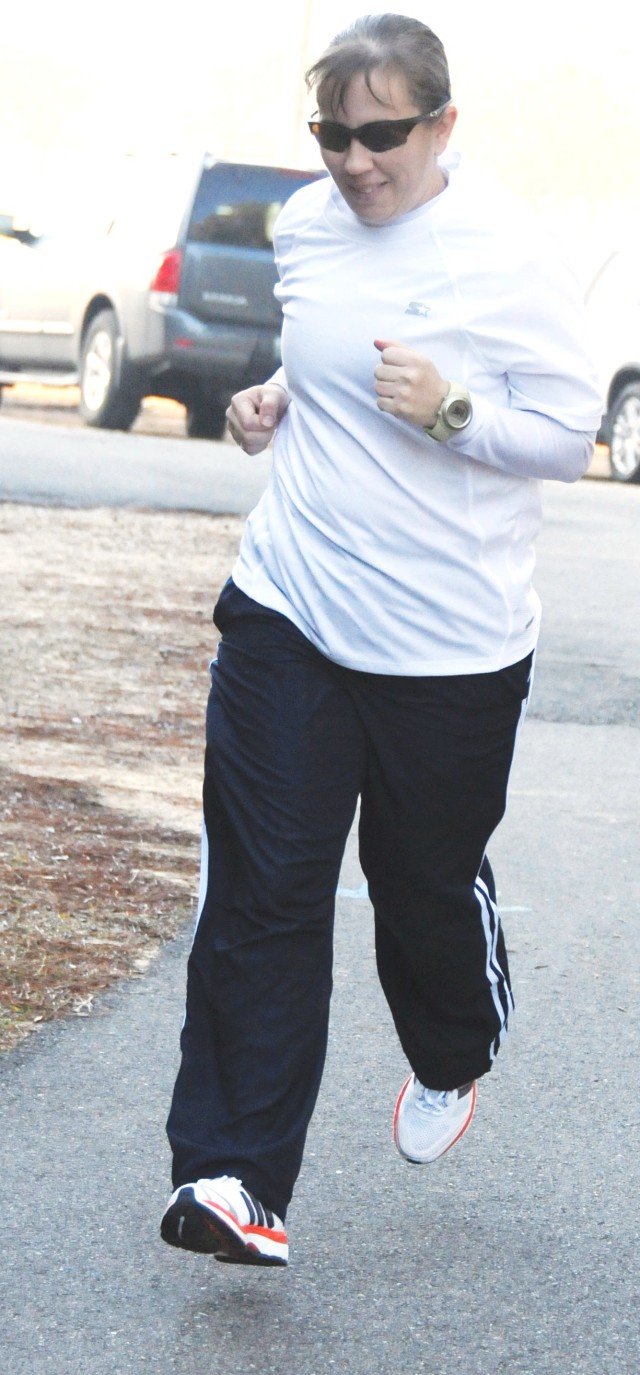FORT RUCKER Ala. -- Despite usually mild winters, the Fort Rucker area occasionally experiences Arctic cold snaps such as the one the region's residents endured earlier this month.
Just like during warm weather, people can suffer physical training injuries because of cold weather, but local physical trainers said proper preparation can prevent these injuries.
According to an Army Web site article at www.army.mil, Soldiers on average experience 361 cold-weather related injuries a year. These vary between trench foot, frostnip, frostbite, hypothermia, chilblains and dehydration.
Of these problems, most people here will suffer from dehydration, according to Sgt. 1st Class (P) Jeffrey Herzog, a Noncommissioned Officer Academy instructor and certified personal trainer.
"(People) don't drink enough water. When you're dehydrated, you get colder quicker," he said.
Maj. Laura Ricardo, Lyster Army Health Clinic chief of preventive medicine agreed, noting consumption of caffeinated drinks causes the body to lose more fluids. Signs of dehydration begin with cramps and continue to chapped lips and skin, urinary infections, lack of sweating and fever.
Ricardo said some people drink more than they eat to prevent dehydration, but that is not a safe alternative.
"You have to eat. You have to remain balanced," she said.
Proper clothing prevents many other injuries, according to Ricardo and Directorate of Family and Morale, Welfare and Recreation physical trainers.
Many exercisers dress too warmly and begin to sweat, which can chill skin. To prevent this from happening, community members should dress in layers, which allows them to peel off clothing as they warm up. To prevent the chilling effects of sweat, DFMWR staff member recommend exercisers wear a synthetic material as the bottom layer, fleece for the next and a waterproof, breathable outer layer.
"The best thing is to try and keep your body as dry as possible. When you're done training, get rid of your sweaty clothes or put on something dry and warm on top," Herzog said.
Another reason to dress in layers is the region's extreme temperature swings, which can cause head colds, Ricardo said.
Injuries like frostnip, frostbite and chilblains occur to exposed skin, most commonly on cheeks, ears, fingers, feet and wrists, according to the www.army.mil article. DFMWR trainers recommend covering extremities to prevent these ailments.
To protect hands, trainers advise wearing a thin pair of gloves underneath a thicker pair or mittens lined with fleece or wool. For feet, they recommend buying exercise shoes a half-size larger than usual to allow more sock protection. Wearing lotion and lip balm also protects skin.
"Your skin is the first layer of defense. When skin breaks down, it starts to crack," Ricardo said.
To avoid other injuries, trainers recommend doubling stretching time, which increases flexibility, range of motion and amount of oxygen circulating.
If people suffered cold-weather injuries before, they are more likely to suffer similar injury in Alabama despite warmer temperatures, Ricardo said.




Social Sharing